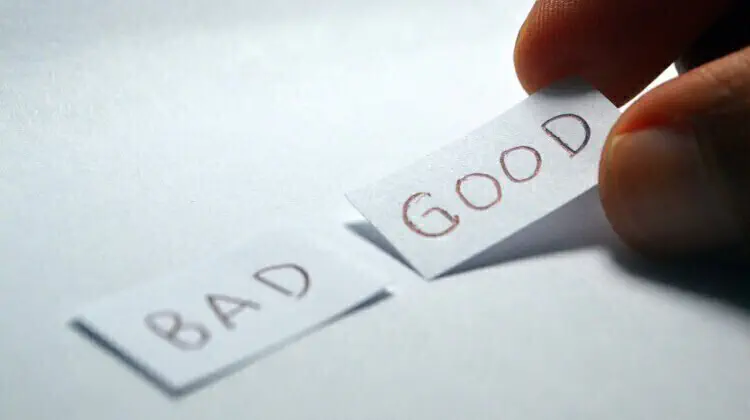3 Powerful Tips to Improve Your Trading, Backed by Science
By Galen Woods ‐ 5 min read
Relying on the science of decision-making, these 3 practical and powerful trading tips will help you trade better and earn more.

These days, we’re fortunate to have dedicated scientists. They have a lot to offer to everyone, including traders. These full-time researchers allow us to enjoy their findings without replicating their rigorous research.
Even better, though, is applying their ideas to improve our trading.
Traders risk their money in the market with each trade. As a result, they are often plagued by cognitive and emotional biases.
The scientific research of these biases offers many practical and powerful tips for traders. These are three trading tips that helped me, and I hope you find them useful as well.
1. Calibrate Your Mind: Your trading skill is not as good as you think
Experts are quoted everywhere. But extensive research has established that experts suffer from overconfidence. In particular, experts are notoriously bad at probabilistic judgments.
Everyone, including experts, suffer from overconfidence. A great example is a study showing that a majority of drivers think that they are above average drivers.
Do you think that you are a good trader? Are you confident of your read of the market? Do you feel optimistic about a trading setup?
If you think of yourself as a good trader, chances are you are overestimating your trading skill.
Luckily, there are ways to reduce the effect of this bias. This process is known as calibration. After calibration, experts tend to produce more accurate estimates.
One method of calibration is premortem analysis. It has two steps. First, assume that something had already gone wrong. Next, explain why it went wrong. After a premortem analysis, experts tend to produce a better estimate.
Assessing a trading setup is a probabilistic judgement. Before you decide to take a trade, you must have formed an opinion of its winning chance. Your opinion might be inflated.
Use a premortem analysis to correct your assessment of the winning probability.
- Assume that the trade has failed.
- Explain why it failed.
Assess the winning probability of your trading setup after going through a premortem analysis. As you explain the assumed failure, you become more aware of reasons against taking the trade. As a result of this calibration process, you will get a better estimate.
Assume that every trade is a loser.
Look for reasons not to enter the market, rather than reasons to enter.
You might’ve heard such advice from experienced prudent traders. Premortem analysis is the scientific technique behind these advice.
Read more about the science behind:
2. Trade Less: Your mind gets tired of making decisions
Trading less is a perfect example of just how counter-intuitive trading for a living is.
It’s not surprising, given how we constantly equate activity to money and results. To earn more, you need to work more. To get better results, you need to study more.
Hence, it seems so natural to think that trading more means earning more. But that’s incorrect.
The scientific reason is decision fatigue - a term coined by psychologist Roy F. Baumeister. It refers to deteriorating quality of decisions after a series of decision-making.

The idea is this.
- You need willpower to make good decisions.
- Examples include eating healthy or following your trading rules.
- But your willpower is limited.
- And every decision you make saps your willpower.
- Hence, with each decision that you make, the quality of your decision drops.
To resist eating your favourite snack, you need willpower. This is why later in the day, after making dozens of decisions, you will find it harder to resist that piece of chocolate.
Moreover, decision fatigue has nothing to do with how rational you are normally. A study showed that judges were more likely to give favourable rulings earlier in the day. This is because when their willpower had been depleted, it became harder to consider all the relevant facts, and easier to simply say no.
Following your trading rules and taking the right trades consume willpower. Hence, with each trading decision, your ability to follow your trading rules decreases.
We know that our trading performance relies on our ability to follow our trading rules with discipline. Thus, it makes sense to trade less, and not more.
The statistician in you might be protesting. The statistician says that we need to take as many trades as possible, so that our trading edge can manifest itself.
That’s true, if you are following your trading rules and making good discretionary decisions. Clearly, it does not apply when decision fatigue has set in.
If you trade mechanically with automated trading systems, you do not need to trade less. But you should make sure that you do not tinker with your trading systems in a state of decision fatigue.
Read more about the science behind:
- Making choices impairs subsequent self-control: a limited-resource account of decision making, self-regulation, and active initiative.
- Do you suffer form decision fatigue?
3. Stop Analysing Every Losing Trade: The Law of Small Numbers

In his bestseller “Thinking, Fast and Slow”, Daniel Kahneman recounted his advice to the Israeli Air Force.
Two squadrons flew from the same base with the same operating parameters. One squadron lost four planes while the other lost none. The Air Force launched an investigation to find out why.
However, with only two squadrons and no clear cause, it’s doubtful if there’s even an explanation. Hence, Daniel Kahneman saw blind luck as the most likely explanation. Accordingly, he advised the Air Force to stop the investigation.
We like to generalise conclusions with a small sample. We like to think that everything happens for a reason and underestimate the degree of luck in small samples. There is no explanation for luck.
Causal explanations of chance events are inevitably wrong.
- Daniel Kahneman
Trying to explain why your trade failed? Are you sure it’s not a chance event? Trying to explain a chance event is a waste of time and a misdirection of your effort.
Before you explain your losing trades, think about the law of small numbers. You need to collect a large sample of trades before conducting any investigation.
Read more about the science: